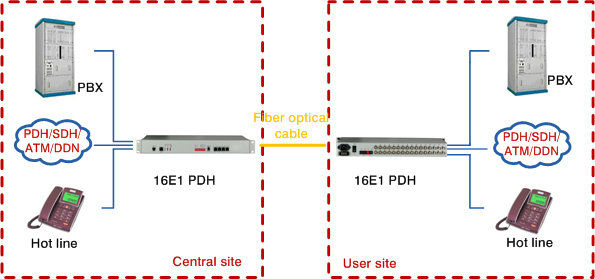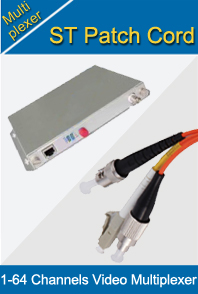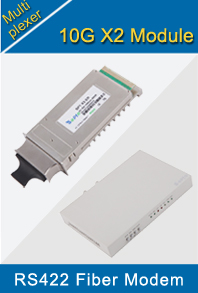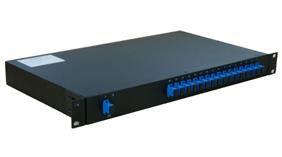-

- Sopto Home
-

- Special Topic
-

- Multiplexer Knowledge
-

- What is Multiplexing?
Multiplexer Knowledge
- Why is Multiplexing Needed in Data Communication Systems?
- What is Concept of Multiplexing in Telephone System?
- What is Digital TV Frequency?
- Outlook of the WDM Networks
- DWDM Technical Overview
- CWDM Technical Overview
- How to Activate Cable Modems?
- How to Install a Fiber Optic Modem?
- How do I Choose a Best Fiber Modem?
SOPTO Special Topic
Certificate



Guarantee
Except products belongs to Bargain Shop section, all products are warranted by SOPTO only to purchasers for resale or for use in business or original equipment manufacturer, against defects in workmanship or materials under normal use (consumables, normal tear and wear excluded) for one year after date of purchase from SOPTO, unless otherwise stated...
Return Policies
Defective products will be accepted for exchange, at our discretion, within 14 days from receipt. Buyer might be requested to return the defective products to SOPTO for verification or authorized service location, as SOPTO designated, shipping costs prepaid. .....
Applications
Multiplexers can be used to connect PBX, Hot line and other devices of network from central site to user site through fiber optical cable.
SOPTO Products
- Fiber Optic Transceiver Module
- High Speed Cable
- Fiber Optical Cable
- Fiber Optical Patch Cords
- Splitter CWDM DWDM
- PON Solution
- FTTH Box ODF Closure
- PCI-E Network Card
- Network Cables
- Fiber Optical Adapter
- Fiber Optical Attenuator
- Fiber Media Converter
- PDH Multiplexers
- Protocol Converter
- Digital Video Multiplexer
- Fiber Optical Tools
- Compatible
Related Products
Performance Feature
High integration desig
Low power consumption
Good EMC, EMI
Stable and Reliable
Multiplexer Knowledge
Recommended


What is Multiplexing?
Multiplexing is the technology that is able to combine multiple communication signals together in order for them to traverse an otherwise single signal communication medium simultaneously. Multiplexing can be applied to both analog and digital signals. A benefit of using multiplexing, or muxing, is reducing the physical hardware cost for expensive dedicated network communication segments, such as copper or fiber cables.
Multiplexing is widely used in telephony, data communications, and audio/video broadcasting. Telephone service typically use multiplexors to combine the various lines in a neighborhood into a single signal that is then carried to the central switching office for routing and call management. With the advances in VoIP technology, traditional phone line systems are being replaced by digital packet-based audio transmission.

Some data communication links, especially leased lines and long-distance lines, are often implemented as multiplex connections in order to maximize use while minimizing costs. Many forms of television transmission, especially cable and satellite solutions, employ multiplexing to send a single carrier channel to recipients or subscribers that carries all of the offered audio and video channels at once. The end user then tunes a receiver to the proper signal to decode the appropriate channel’s transmission. This is also the case for a growing number of FM radio stations. Many major market FM stations are adding in sub-channels to their primary signal in order to offer alternate or complementary news, talk, or entertainment.
It is important to distinguish between packet switching systems and multiplexing systems. Packet switching divides a communication into segments or packets. Each packet is then separately routed along shared or common network paths to the destination. Most network pathways are only able to support a single communication signal at a time. Thus, packets are sent in a series rather than in parallel form. A multiplex system will be able to combine multiple communication signals onto a single physical network medium, thus providing simultaneous or parallel transmission.
There are several types, or forms, of multiplexing, including:
- pace-division multiplexing
- Frequency-division multiplexing
- Time-division multiplexing
- Polarization-division multiplexing
- Code-division multiplexing
Space-division multiplexing is implemented using separate physical connections between endpoints. Effectively, it is a simulation of multiplexing that is actually multiple carriers bundled together. This can be implemented with physical cables, such as an 8-conductor Ethernet twisted pair cable, or via wireless as seen in the IEEE 802.11n amendment adding multiple in multiple out (MIMO) to wireless networking. Because space-division multiplexing is actually using multiple communication channels rather than a single channel to support multiple communications, it is not considered true multiplexing.
Frequency-division multiplexing is an analog technology that supports the transmission of multiple communications over a single carrier by shifting each communication to a unique frequency range. A related technology for fiber channels is known as wavelength division multiplexing. This technology requires that each communication be transmitted as unique wavelength (i.e. color) of light along the shared fiber optic channel.
Time-division multiplexing is a technology that involves merging or sequencing bits or bytes from multiple signals into a single communications channel. Specific time slices or time divisions are assigned to each communication. This timed-based channel switching is synchronized between the endpoints of the multicast pathway. When performed fast enough, the transmitting and receiving systems do not realize their communications are crossing a multicast pathway.
Polarization-division multiplexing uses polarized electromagnetic signals to create multiple orthogonal channels. Orthogonal channels are those whose frequencies are at right angles to each other when transmitted along the same communication path. This orientation prevents interference and enables multiple signals to be sent along the same path. This method of multiplexing is applicable to both radio wave transmissions and optical transmissions.
Code-division multiplexing operates by assigning a unique code to each communication. The original communication and assigned carrier code signal are combined. Then, multiple coded signals are transmitted over the carrier channel or channels simultaneously. The receiver extracts the multiple signals by extracting the appropriate carrier code signal from the desired transmission.
This technology can be applied when using a spread spectrum of available frequencies in either a frequency hopping spread spectrum (FHSS) or direct sequence spread spectrum (DSSS) form. FHSS uses a single frequency at a time but switches frequencies to avoid interference or eavesdropping. DSSS uses multiple frequencies simultaneously.
For more information, please contact a Sopto representative by calling 86-755-36946668, or by sending an email to info@sopto.com



